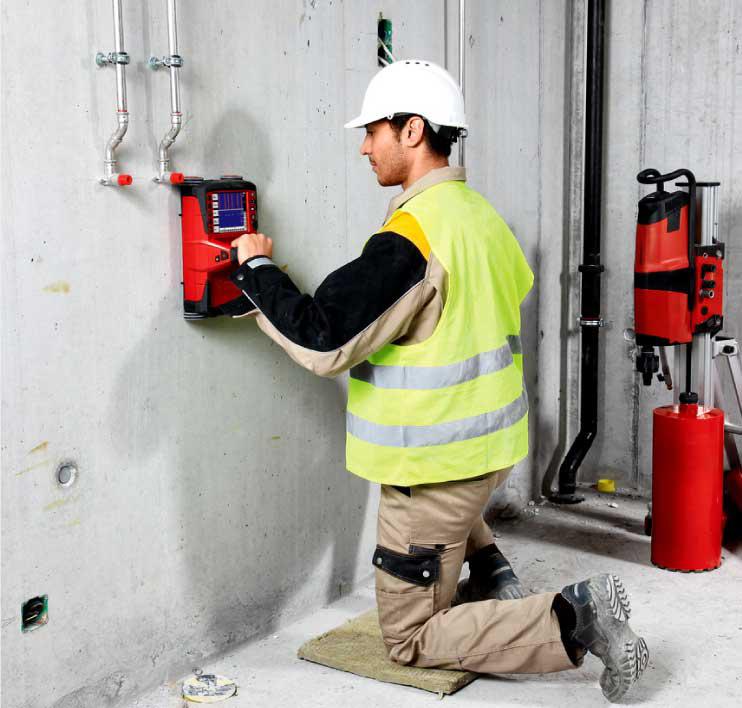RainierGPR Concrete Scanning: Professional Insights and Best Practices
RainierGPR Concrete Scanning: Professional Insights and Best Practices
Blog Article
Exploring the Depths: A Comprehensive Overview to Concrete Scanning and Its Diverse Applications
In the realm of building and facilities development, the meticulous process of concrete scanning holds a critical duty in making sure the structural integrity and safety and security of jobs. As innovation remains to evolve, the applications of concrete scanning have actually increased much beyond simple surface-level analyses. From spotting rebar and post-tension cables to mapping out avenues and voids hidden within concrete structures, the capabilities of modern-day scanning methods are both vital and remarkable. Nevertheless, real depth of concrete scanning's prospective reaches also better, branching into unforeseen fields and sparking ingenious services. The interconnected web of possibilities that concrete scanning presents is not only interesting but also important for the development of numerous industries.
Relevance of Concrete Scanning
Understanding the significance of concrete scanning is essential in guaranteeing the safety and stability of structures throughout building and remodelling jobs. Concrete scanning makes use of advanced modern technologies such as ground-penetrating radar (GPR) and electro-magnetic induction to find embedded items, gaps, or other anomalies within concrete frameworks.
Furthermore, concrete scanning plays a critical role in ensuring compliance with building codes and laws that mandate the protection of existing architectural parts during building tasks. By accurately mapping out the inner make-up of concrete, scanning innovations make it possible for building specialists to make informed decisions that promote the architectural security and sturdiness of structures and infrastructure tasks. In significance, the significance of concrete scanning hinges on its capacity to protect both the structural honesty and the employees associated with building ventures.
Technologies Made Use Of in Concrete Scanning
Concrete scanning counts on sophisticated technologies such as ground-penetrating radar (GPR) and electromagnetic induction to properly spot embedded objects and abnormalities within concrete structures. Ground-penetrating radar operates by discharging high-frequency electro-magnetic waves right into the concrete. When these waves experience different materials or voids within the concrete, they recuperate to the surface, allowing the GPR system to produce an in-depth subsurface image. This innovation is specifically efficient in finding rebar, post-tension cable televisions, channels, and other things embedded in concrete.
Electromagnetic induction, on the various other hand, functions by generating magnetic fields around a concrete framework with a transmitter coil. When metal items are existing within the concrete, they interrupt these electro-magnetic fields, creating eddy currents to stream through the metal. By determining the adjustments in the magnetic fields with a receiver coil, the system can determine the area of metallic objects in the concrete.
These advanced innovations play an important role in non-destructive screening, ensuring the safety and stability of concrete frameworks in different markets.
Applications in Building Sector
Within the building sector, concrete scanning technology finds diverse applications that enhance project efficiency and safety. website here In addition, concrete scanning is made use of for locating gaps, such as air pockets or locations of degeneration within concrete, which can endanger the total toughness of a framework. Concrete scanning plays a vital duty in top quality control by validating the thickness of concrete covers over reinforcement, ensuring compliance with design requirements and standards.

Safety And Security Benefits of Concrete Scanning
In the world of building and construction security, the application of concrete scanning technology presents a vital benefit in preemptively identifying potential risks and strengthening structural honesty. By utilizing innovative scanning methods such as ground-penetrating radar (GPR) and electromagnetic induction, construction groups can accurately find rebar, post-tension cables, channels, and various other hidden objects within concrete structures. This aggressive technique dramatically decreases the threat of unexpected strikes during exploration, cutting, or coring activities, thereby protecting against expensive damages, injuries, and job hold-ups.
Additionally, concrete scanning improves employee safety and security by supplying real-time information concerning the architectural problem of concrete aspects. By addressing prospective security issues promptly, concrete scanning adds to creating a safe and secure working environment and minimizing the chance of More Help structural failings or mishaps on construction websites.
Future Trends in Concrete Scanning
Arising developments in scanning modern technology are poised to change the field of concrete assessment and evaluation. By harnessing the power of AI, these systems can assess vast quantities of information accumulated during scanning procedures to provide even more exact and comprehensive insights right into the problem of concrete structures.
An additional considerable pattern is the growth of even more user-friendly and portable scanning tools. Miniaturization of scanning equipment enables for simpler accessibility to constrained spaces and remote locations, making evaluations extra extensive and efficient. Additionally, developments in cordless interaction innovations enable real-time information transfer and evaluation, assisting in quicker decision-making processes.
Furthermore, there is an expanding focus on sustainability in concrete scanning technologies - RainierGPR Concrete Scanning. Suppliers are progressively including green materials and energy-efficient attributes right into their gadgets to click here for more decrease ecological impact. These future patterns are established to enhance the performance, accuracy, and sustainability of concrete scanning methods, forming the market's future landscape
Conclusion
In conclusion, concrete scanning plays a critical role in the building and construction market by making sure the security and performance of numerous projects. As technology developments, the future of concrete scanning holds encouraging advancements for enhancing construction processes.

Report this page